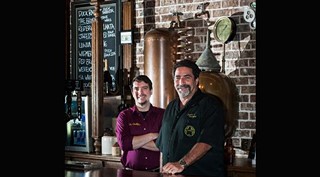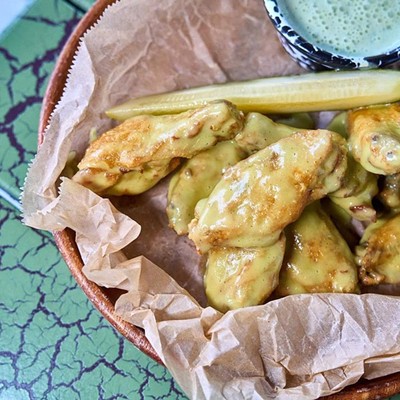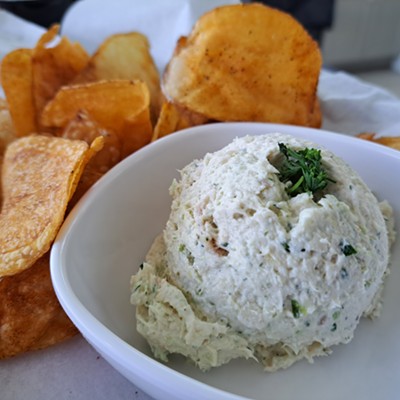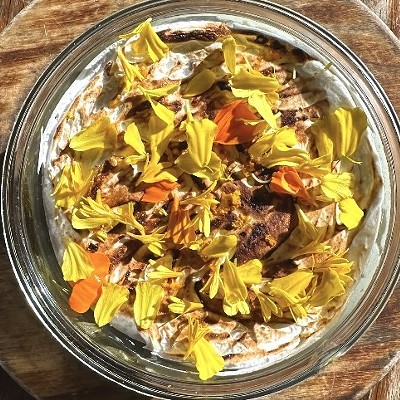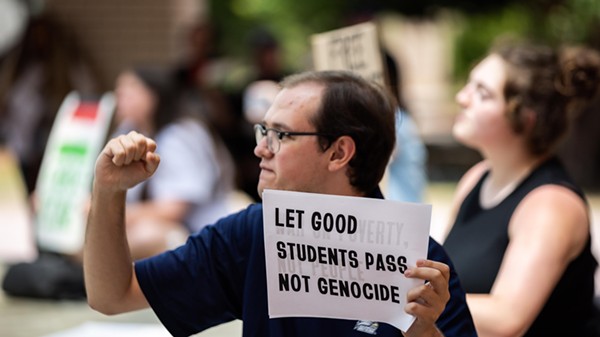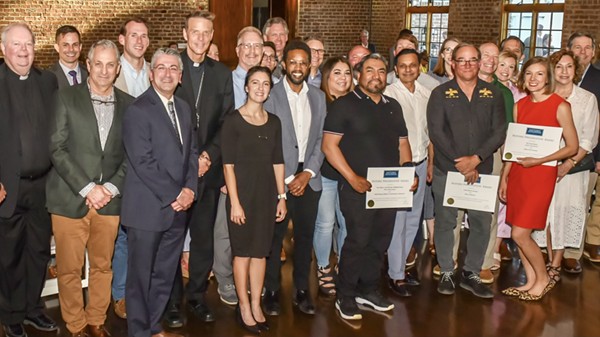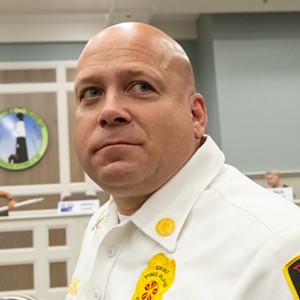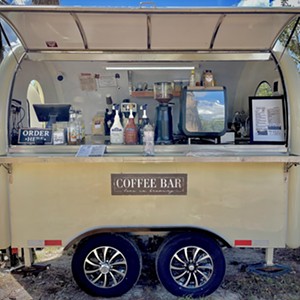In 2004, Maryland–born Michael Volen purchased a three–story brick building in the northwest section of Savannah’s Historic District. It was cheaper than the one he had scouted in Charleston, and 30 years in remodeling and land development taught him that he could take such a place in a transitional neighborhood and flip it like a Tarot card.
Michael has always been the sort to follow his gut, and the real estate at 416 West Liberty Street had a gritty appeal.
“I just was enamored by it,” he says.
He thought it had great bones, typical of those smitten with brick and mortar. “I couldn’t understand why no one was interested in it,” he explains from a room one floor above what is now The Distillery, a craft beer bar and restaurant he runs with his wife Lori and three of their four grown children.
No matter the skill of the remodeling Michael did to stabilize the over 100–year–old structure or that of the broker Michael hired to help him sell the it, no firm deal revealed itself. Michael was sold, but no one else.
It took fifth generation Savannahian, and author of Behind the Moss Curtain, Murray Silver Jr. to cut to the quick. Michael met him the way you do people in Savannah — at the perfect time.
“‘Michael,’ I said, ‘You have bought an island. Your building doesn’t front on any street.’” Murray knew it was a rough spot in a tougher economy. The shell had been vacant for quite a while but had also housed, among other things, a pharmacy, a strip joint and a hip–hop club. But nothing endured.
Michael was forced to look at his investment through glasses a shade less rosy. That end of West Liberty Street had the awkward chunkiness of a bad remodel, and Michael’s horse in the race butted up to a bank and an alley. The parking, too, was miniscule and made Michael’s eyeballs sweat.
“I finally decided, just like anything else I’ve done in my entire life, I’m going to make it work,” he says.
In true Savannah fashion, Michael — now over 30 years sober — decided to open a bar and restaurant. That building, or something inside it, saw Michael coming from miles away.
Murray told Michael he saw a Prohibition–era speakeasy going over well.
For his own part, Michael was delighted to discover that, in 1904, the Kentucky Distilling Company existed in the very same spot. After a couple years it became the Louisville Distilling Company. The Prohibition theme seemed right.
After all, Michael’s own history with alcohol had led him to collect books on the Temperance movement for years.
What Michael didn’t realize, the building surely must have: In 1888, the Woman’s Christian Temperance Union of Georgia set up a Savannah chapter right across the street.
Of course, most Savannahians in the early 20th century would have rather licked a duck than support Prohibition.
Local bartenders and brewers took their operations to Jacksonville for a time and the revenue went with them. But people were still drinking in Savannah. It was a city of Irish and German immigrants who hadn’t signed on for a dry American dream.
George Oelschig’s family has been in Savannah since his grandfather’s arrival in 1881. According to family papers, prior to Prohibition, August Carl Oelschig got barrels of beer from Trommer’s Brewery in Brooklyn every 10 days or so. It was sent to him via the Ocean Steamship Company’s Savannah line, so much of it that a higher–up at Trommer’s paid the Oelschigs a visit once. He figured he’d find a beer garden but landed on a florist.
The family cheer didn’t change during the dusty Prohibition years, George says. “Mother would boil hops on the stove.”
Between the ages of four and eight, George — now deceased — recalled taking pots of home brew down to the basement with his father and older brother. “I’d get a mouthful and then empty it into jugs,” he said. “I’m sure we weren’t the only ones.”
Trade publications like the 1908 Mixer and Server included articles saying as much. “Every one who
knows anything at all about Savannah knows that the prohibition law is observed almost solely in the breach,” one such piece said.
One hundred years later, on Liberty Street no less, Michael knew the look of an old saloon was a must. A grand wooden structure, typical of the period, was the backdrop he wanted. Kenneth Deshong, a guy back in Pennsylvania who had done some woodwork for him in the past, was called. The carpenter had some reservations.
“I said, well, Michael, do you realize I’ve never been in a bar to know what one looks like?” Kenneth, now 69, had grown up on a dairy farm. His lips hadn’t touched alcohol since high school when he found it distasteful. Michael gave him a period photo including the model he wanted, and Kenneth built it in pieces to be assembled on site.
That experience brought up a good point made in consultation with Henry Monsees of Savannah Distributing. Henry’s family has been in the business in Savannah since the 1930s. He told Michael the way to hit this venture out of the park was craft beer.
“Well, I didn’t really know what craft beer was per se,” Michael laughs. His son, Ben, was a senior at Pace University, and was quickly installed as the head of research. Monsees, in turn, put his employee David Little in charge of educating Michael via Ben on craft beer’s various flavor profiles.
The trio went to a craft beer symposium in Washington D.C. and Michael started to understand what was essentially a movement fostering a curious relationship among its small brewers.
“The thing that amazed me, being stone sober through the whole thing, and having to get my son to be part of the research and development team, was the fact that they all got along as friends,” Michael says. “They weren’t competitive at all.” That and the labels, eye candy in which Michael could indulge, were impressive.
“You’ve got the illustrator from all the Grateful Dead albums illustrating the labels for Terrapin. You’ve got Steadman, who used to be the illustrator for Hunter S. Thompson, doing everything for Flying Dog. You’ve got incredible art, incredible expression,” Michael says.
Craft beer was something old that had become new again. Dogfish Head Brewery founder Sam Calagione, who some call the face of craft beer, calls the Distillery inclusive with their beer selection, evangelical for getting the word out about marginal brands, and even educational.
“They have to have a beer IQ that is phenomenal,” he says. “There’s an extreme difference between an Imperial Stout and a Belgian White.”
The people that come to the Distillery, and certainly those who join their hugely successful beer club, get it. It’s about savoring, not getting sloppy — although high gravity craft beers will get you there quick.
The Volens have captured the local and tourist market with a convivial atmosphere. It’s reminiscent of one created by Murray Silver’s grandfather Bo Peep. His legendary lunch kitchen, bar and pool room — long absent from its former spot on Drayton and Congress — called to Savannahians and lists of famous faces passing through town.
“The building tells you what it wants to be in that Savannah way,” Murray explains, “and it won’t allow for anything else. Anything you try to impose on that building, the building is going to reject.”
During buildout of the Distillery, a four-foot section of ground had to be dug for a large cooler. Workers found musket balls in their shovels, horseshoes, and broken dishes and bottles.
On the last day of that project, a worker brought Michael a whole rum bottle which the Coastal Heritage Society dated to the late 1700s. The Siege of Savannah, the bloodiest battle of the American Revolution, was fought there in the fall of 1779.
The spirit of the Distillery is not a somber one though. It is possible that, for all that has happened there, the Volens and their Distillery have brought a few souls some peace.
Maybe that’s what someone’s trying to get across. Motion detector alarms in the dining area are regularly triggered around three in the morning, long after the living have left.
“We feel blessed instead of cursed with this sort of spiritual ambience,” Michael says.

